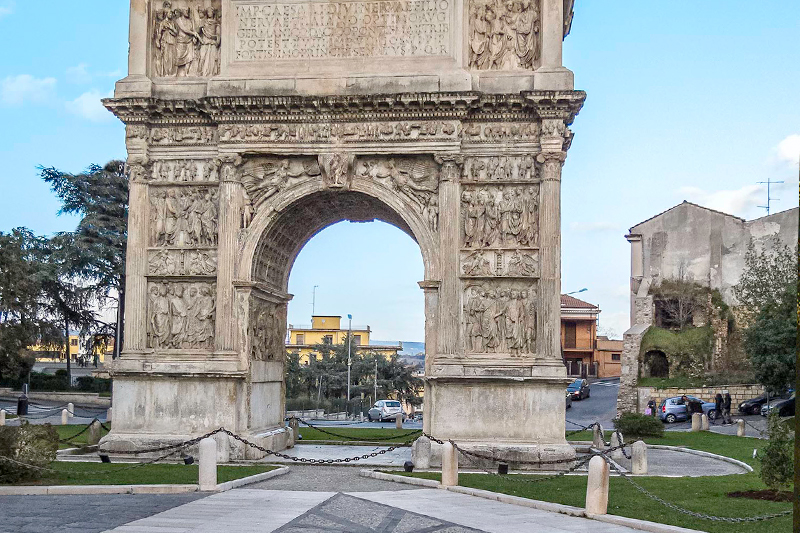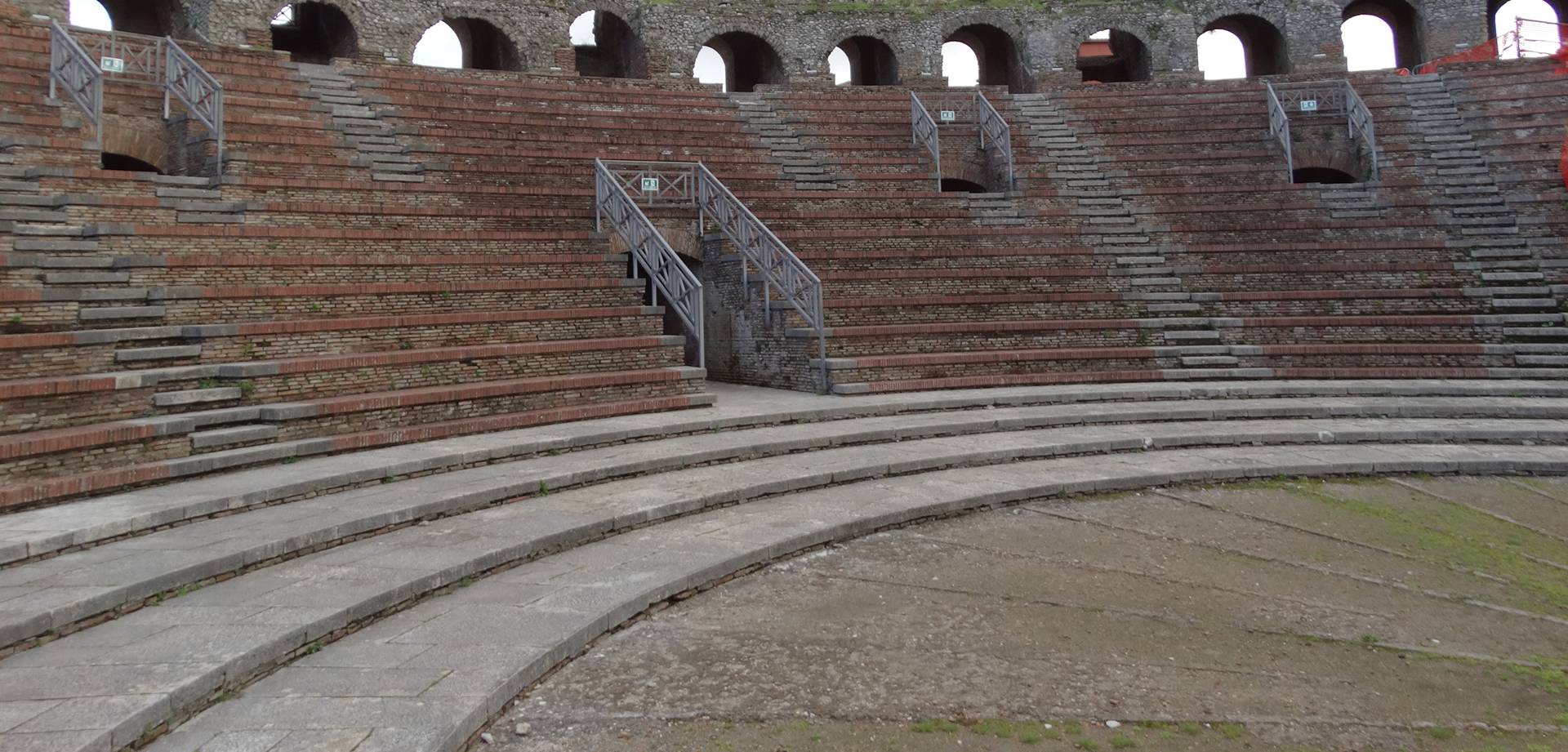
Near Ponte Leproso, in 1985 the traces of the great Roman amphitheatre came to light where, according to Tacitus, the emperor Nero attended a gladiator show in 63 AD.

Near the Leproso bridge, there are remains of the ancient cryptoporticus of the Saints Quaranta, a complex of corridors covered by vaults, put on the edge of a natural difference in height which originally was within the Roman city.

One of the best kept Roman arches in the world, which pays tribute in every single millimeter of its extraordinary marble bas-relief, to the military exploits and to the munificence of the emperor Trajan, creator between 108 and 110 of the Appia Traiana, a more comfortable alternative to the Appia Antica to reach Brindisi, passing through the flat Apulia and the coast.

The huge Roman theater of the Sannio's capital, could accommodate up to ten thousand spectators when it was in use. Built under Hadrian, near the city cardo maximum and inaugurated in 126 AD, as one of the two stones at the entrance to the scene recalls, while the other celebrates the expansion wanted by Caracalla between 200 and 210. A majestic theater matching the importance of Benevento. With a diameter of 98 meters, built in opus coementicium and limestone blocks, it had three waves of 25 arches supported by columns in three different styles: Tuscan, Ionic and Corinthian. The first order, the Tuscan one, and a part of the second have remained intact.
The imposing semi-circular cavea was connected by a brick façade with niches for statues and three monumental doors to the stage, fixed and to great scenic effect, as well as having excellent acoustics, of which two bare pillars remain. Two halls flanked it: one still shows the mosaic floor and the lower plinth covered with colored marble. Of the theater's original decorations, masks have also been preserved and relocated to various parts of the city. Remains of the stairways and corridors that connected the different parts of the theater and part of the entablatures complete what has been saved of a structure that disappeared for centuries under other buildings for residential use. It was not until 1890 that the presence of the ancient theater was discovered among the foundations of the buildings above, which were demolished in the early decades of the last century to unearth the Roman artifact.
Useful information:
open daily from 9:00 a.m. to 7:00 p.m.
Copyright video, foto e testi © 2020